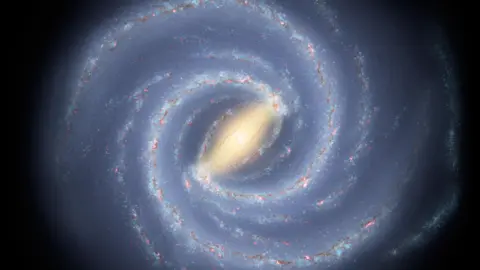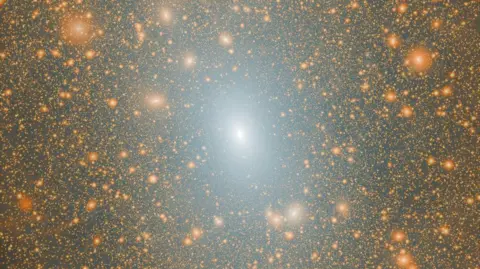Milky Way could have 100 more satellite galaxies
 NASA/JPL-Caltech
NASA/JPL-CaltechThe Milky Way could have more satellite galaxies than previously thought, according to new research.
Cosmologists at Durham University predict the existence of between 80 and 100 satellite galaxies surrounding our home galaxy on top of the 60 already known.
Scientists used a technique combining high resolution supercomputer simulations and mathematical modelling to reach their findings.
Lead researcher Dr Isabel Santos-Santos said the findings could help improve understanding of dark matter.
She said that if the galaxies were seen by a telescope it would help support the Lambda Cold Dark Matter (LCDM) theory, which would have "a big significance for the whole community".
It is used to explain the large-scale structure of the Universe and proposes there should be many small galaxies.
LCDM also suggests 25% of the Universe is cold dark matter.
"In other models where the particle mass is different, we do not expect that many satellites," Dr Santos-Santos said.
"So, even if we find them, or if we don't, the implications are very strong for the whole community of cosmologists and astrophysicists in knowing what is the dark matter particle."
 Supplied
SuppliedAccording to the LCDM model, galaxies form in the centre of gigantic clumps of dark matter called halos.
The new research shows that the Milky Way's missing satellites are extremely faint galaxies stripped almost entirely of their parent dark matter halos by the gravity of the Milky Way's halo.
These so-called "orphan" galaxies are lost in most simulations, but should have survived in the real Universe.
It is hoped new advances in telescopes and instruments like the Rubin Observatory LSST camera will give astronomers the ability to detect these very faint objects.
"We expect that in the next five years we will be able to confirm, to test if these satellite galaxies that we are predicting are really there or not," Dr Santos-Santos said.
 The Aquarius simulation, the Virgo Consortium/Dr Mark Lovell
The Aquarius simulation, the Virgo Consortium/Dr Mark LovellDr Santos-Santos said previous work had used simulations with lower resolution and could only predict a certain number of galaxies with a certain mass.
The Durham researchers used the Aquarius simulation and the GALFORM model, a code developed at Durham over the past two decades.
The findings are being presented on Friday at the Royal Astronomical Society's National Astronomy Meeting, being held at Durham University.
